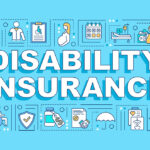Sequels are never as good – are they? Well, that may just hold to movies. There’s plenty of new tax & retirement planning implications from SECURE Act 2.0, passed Dec. 29, 2022.
The original 2020 act had many impactful provisions, but we’ll remind everyone of one very significant change: money in retirement plans that is inherited by non-spouse beneficiaries generally must be taken out (and taxed) within 10 years. Previously, tax law allowed distributions from inherited retirement money to be stretched over the course of the beneficiary’s lifetime.
The retirement and tax planning implications from the SECURE Act 2.0 are far broader – there are over 100 provisions – but no single change is as impactful as the elimination of the stretch IRA in the first bill. Given the breadth of provisions, we’ll focus on three of the most important areas for our clients and their families.
Required Minimum Distributions:
The first Secure Act pushed the required age at which distributions must be taken from retirement plans back from age 70.5 to 72. If you were was born before 1951, there’s no change since you’re already taking distributions. For those born between 1951 and 1959, RMDs now begin at age 73. If you were born after 1960, the first RMD has been pushed back to age 75.
What’s the impact on me?
- For those who started taking RMDs in 2022 and prior, there’s no impact.
- For everyone else, there will be a longer gap of time between retirement and your RMD age. The potential for lower income during that “gap” allows for additional tax planning – such as Roth conversions, taking capital gains at 0% or 15%, and even taking a distribution from a retirement plan voluntarily while in a low tax bracket. It also means your tax rate on distributions from age 73/75 through the end of your life could be higher, since there will be more income those years.
There are a number of other provisions relating to distributions as well – two of which we discuss below.
- For those that are charitably inclined: there’s no impact to the age at which a “qualified charitable distribution” (QCD) can be made (age 70.5). However, the wider gap between when someone may take RMDs and their age 70.5 opens the door to more tax planning opportunities.
- There are several other provisions related to QCDs that don’t apply to many retired givers, such as an inflation-indexed maximum and a one-time ability to fund a split-interest entity (e.g., a Charitable Remainder Annuity Trust).
- Lastly, we’ll note that there’s a provision allowing a spouse to elect to take RMDs as if he/she was the original IRA’s owner. It gets complicated, but this could make sense for the older spouse to elect before a younger spouse passes away so that the older, surviving spouse can use the decedent’s life expectancy to delay and stretch out required distributions.
Next up: there were many provisions related to Roth contributions. Notably, this bill did not close the ability to make “back-door Roth IRA” contributions. Rather than restricting Roth access, the bill’s various provisions expand access to or in some cases even require Roth contributions instead of the traditional “pre-tax” contributions. The idea behind why Congress is expanding Roth features is straightforward: it benefits the government via higher current tax revenue, and it helps savers via additional opportunities to grow tax-free wealth. Here are some details on two of the more interesting provisions:
Catch-up Contributions:
Effective in 2024 and for plans offering a Roth option, high wage earners will be required to contribute after-tax money via the Roth option of a retirement plan for any catch-up contributions. High wage earners are defined as making at least $145,000 from the employer whose plan the catch-up contributions are being made into. Catch-up contributions are allowed for employees age 50+. For 2023, after contributing the regular maximum of $22,500 into a retirement plan, employees age 50+ can still make their optional catch-up contributions of $7,500 with pre-tax money.
- Further, catch-up contributions for participants aged 60-63 will be bumped up to a maximum of 150% of the regular catch-up amount. Though this provision takes effect in 2025, if it did apply to 2023 contributions, the “bumped up” maximum would be $11,250. Keep in mind that all this would have to be after-tax wages going into the Roth portion of the plan starting next year.
529-to-Roth Transfers
Starting in 2024, it will now be possible to transfer money leftover in a 529 plan to a Roth IRA for the beneficiary. In the past it usually didn’t make sense to fully fund a 529 plan since earnings on non-qualified withdrawals are subject to taxes and a 10% penalty. But now that there’s a release hatch for excess dollars, there will be more client situations where attempting to fully fund college with 529 plans will make sense. There is still some cloudiness that the IRS will clarify but as the law is written this release hatch is here to stay. Here are some major restrictions on this new ability:
- The transfer must be a direct rollover into the Roth IRA of the 529 plan’s beneficiary. It can’t go to the owner’s Roth IRA.
- The beneficiary must have earned income during the year of the rollover. However, the income limit that normally applies for Roth IRA contribution eligibility will not apply for these rollovers.
- The IRA contribution limit still caps the total amount that can go into the Roth IRA each year ($6,500 in 2023). The maximum applies to the combined total of contributions and rollovers from a 529 plan – no doubling up!
- The 529 plan must have been maintained for at least 15 years and money contributed within the last 5 years cannot be moved into the Roth IRA.
- A lifetime transfer maximum of $35,000 applies to each beneficiary.
As you can see, these limitations mean that 529 plans should still be used with education funding as the intent. But this provision will provide flexibility to fund a 529 plan more aggressively if considered along with cash flow, retirement plan strength, and estate planning considerations.
There are over 100 provisions in the SECURE Act 2.0 – so we’ve only scratched the surface when it comes to the breadth of new changes. However, these are some of the most applicable changes for Boardwalk clients. Please let us know if you’re interested in learning more about the SECURE Act 2.0 and how it applies to your situation. But rest assured, we will be bringing planning considerations to you as we meet – including any financial planning recommendations based on the other provisions not outlined here.










